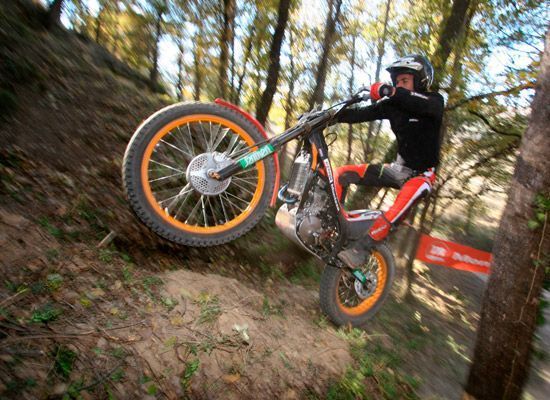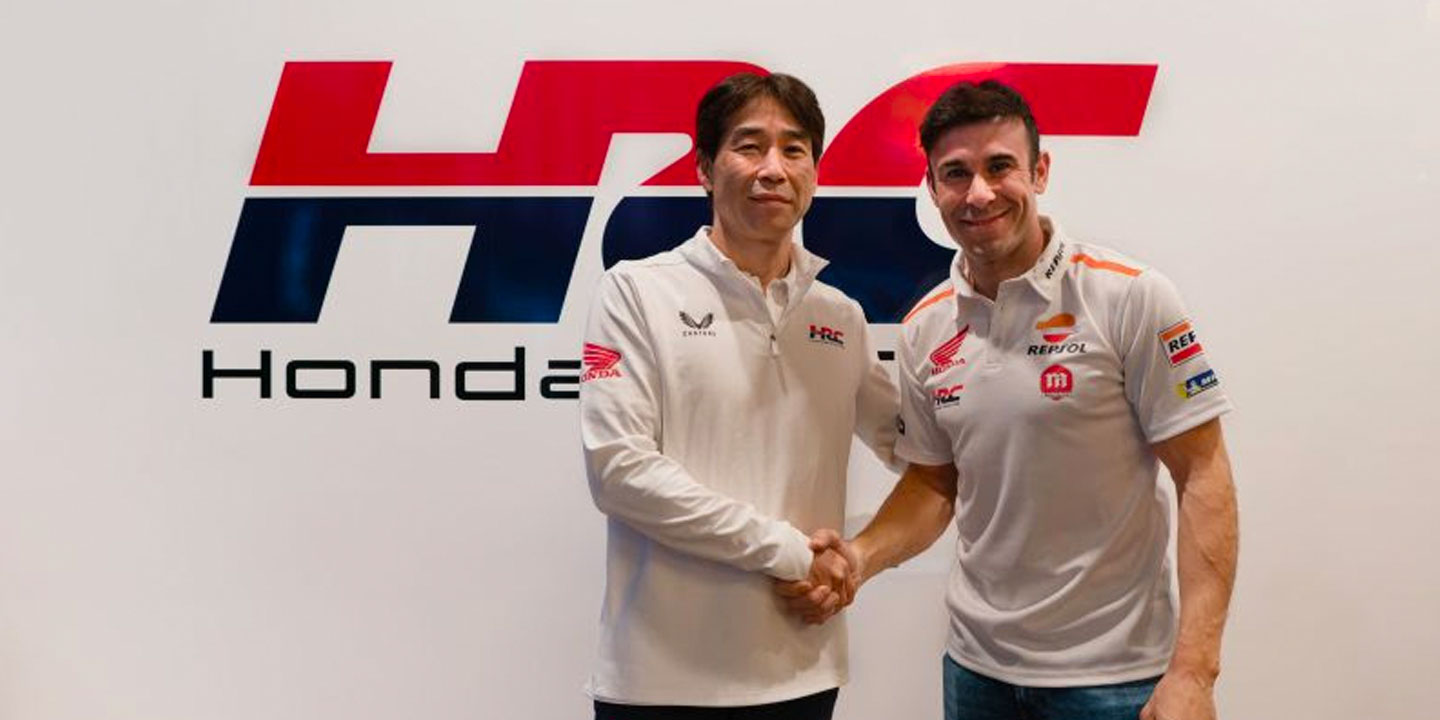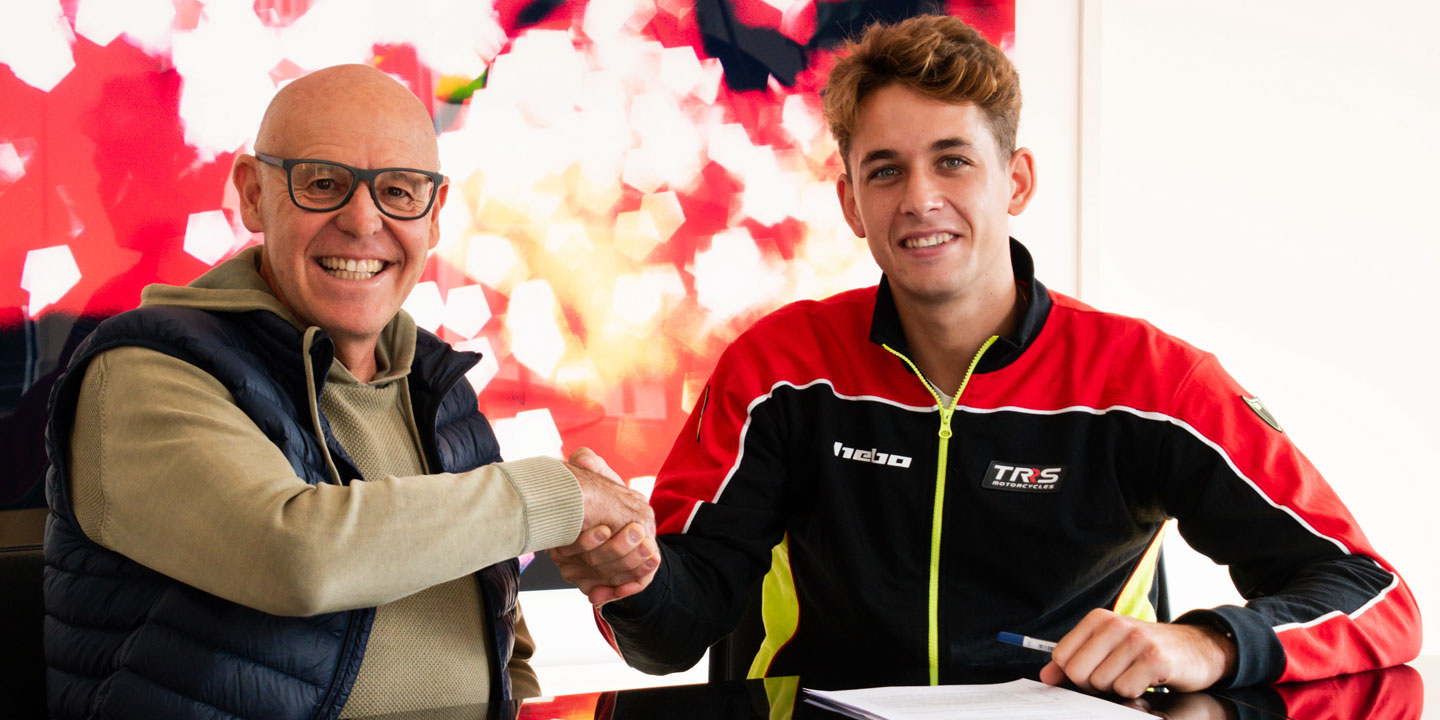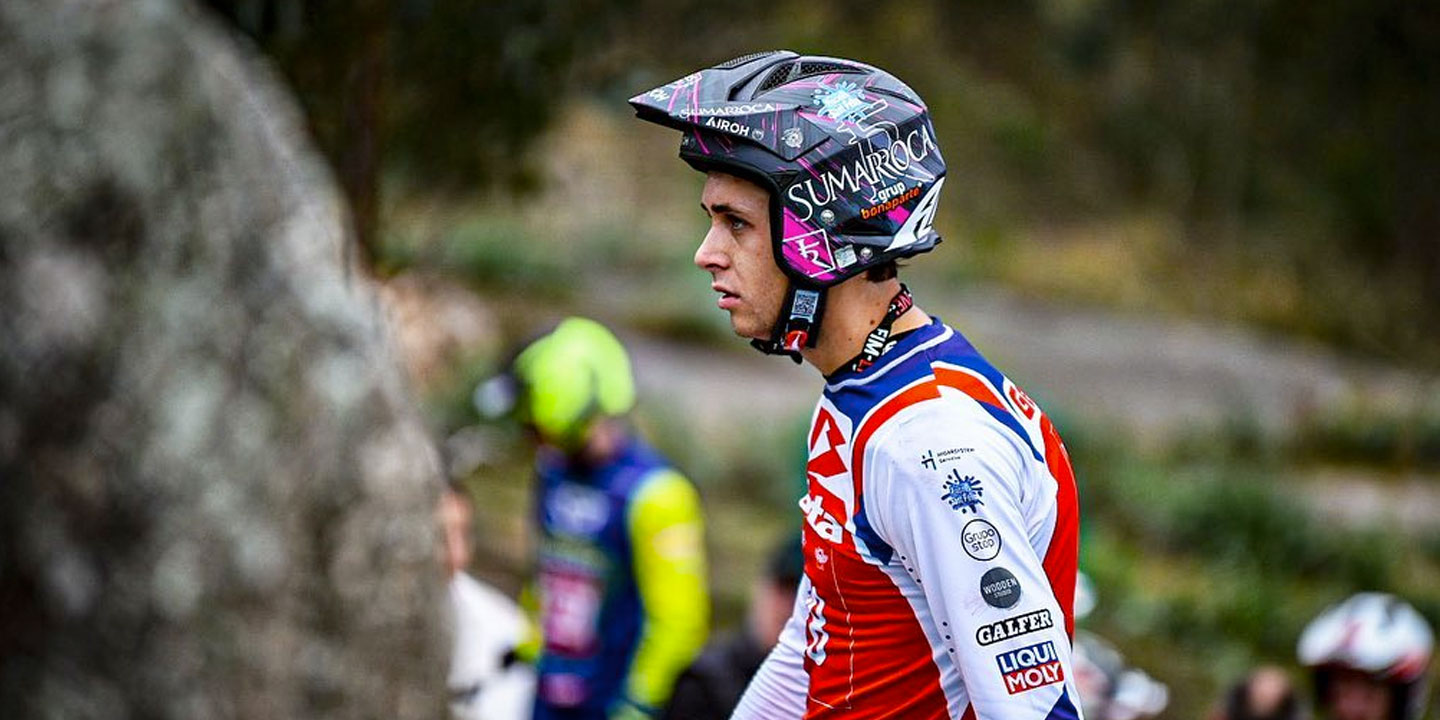Getting on an official bike is always a privilege. Prior to the founding of Trialworld, working as a As head of Trial tests for the most prestigious motorcycle magazines, I’ve had the opportunity to get behind the controls of the Beta Rev3 with which Toni Bou was proclaimed Champion of Spain and which would later be inherited by Jeroni Fajardo; also to the Cabestany’s Sherco 4T and the Gas Gas TXT 300 by Raga. However, the The most impressive official test has been the Montesa 4RT. I had the opportunity to do this test twice; the first, in 2006, where I was able to test the Montesa 4RT by Lampkin and Fujinami; The second, at the end of 2007, in addition to repeating on the Japanese bike, I was able to test the Toni Bou.
The test that you can read below was written by me on that date for the magazine Motociclismo and is reproduced in its entirety with the comments of that time. Despite the fact that 5 years have passed, the surprising thing is that hardly anything has changed in Montesa, so you will be able to get a pretty rough idea of the bike that Toni Bou rides today. It is unofficially said that the bulk of the evolution was halted in 2009 and since then the World Champion’s bike has hardly received any relevant evolutions.
On the other hand, I have the obvious feeling that Montesa did not tell us absolutely all the technical particularities of the bike. There is a reason for this, since in 2008 Montesa was still betting heavily on the mass production of its Cota 4RT and they wanted to justify that their “official” Cota was not so radically different. The reality is that there is a breathtaking gulf between the two. Another unofficial fact is that the bikes ridden by Fujinami and Bou can be worth close to 300,000 euros. Behind this data there are many hours of R+D, hundreds of exclusively manufactured aluminum and titanium parts, MotoGP telemetry and much more to achieve the desired performance and 10 kilos less weight.
On the official Cota 4RT the most important changes since 2008 have fallen on the clutch, injection pump. In comparison, the best 2T competitions are well under €60,000.
A curious fact is that almost any screw coming from the engine is labeled and sent to Japan for verification, or that every few hours of use, the motor is opened completely to check all the components, tightening torques and so on. As you can see after reading this article, the work of a World Champion like Toni Bou has a lot of work and professionalism behind it.
To understand why Montesa abandoned a winning bike like the Cota 315R and bet again on the 4T, we recommend this other article: Honda and the 4T. From Lejenue to Bou.
CULT OF THE QUEEN
* Reproduction of the written test in 2007.
If in the first evolution the Montesa technicians became real nutritionists and computer experts to lighten and make the official 4RT more competitive, most of the work in this latest batch has been focused on optimizing a very complex electronics to the maximum. The result: two-time world champions with Toni Bou.
At the end of 2005 we had the opportunity to get on the first evolution of the Cota 4RT, at that time the event was starred by the mounts of Takahisa Fujinami and Dougie Lampkin. A lot has happened within the Montesa team since then: the 4RT has gone from being considered the ugly duckling of a paddock where the culture of 4T had no place, to the swan that starts as the undisputed favorite in any event, whether outdoor or indoor.
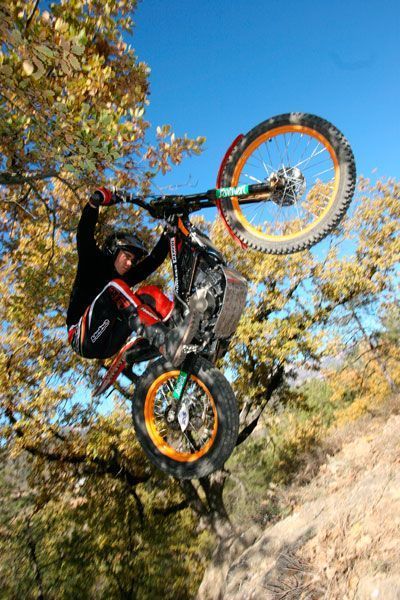
It’s been three years since the Montesa team, following Honda’s guidelines, took over with all the consequences the most important challenge in its history: to bury a winning bike, such as the Cota 315R, forever, and start working on a strictly series valve bike to achieve the same task. Although their main rivals have justified this impeccable evolution in the economic support that is expected from a giant like Honda, the truth is that those who know their work methodology and professionalism, know that this year’s World Cup double is not the result of any coincidence.
Although the titles have materialized with Toni Bou , the truth is that last year the Cota 4RT was, until the last round of the world championship, a firm candidate in the hands of Fujinami. The merit of the Piera rider in being crowned in his first year is undeniable, but when we refer to this winning bike we must also applaud the hard work that the Montesa team has had to live during these three years and, of course, those who have fought with the 4RT on the front lines: Lampkin and Fujinami.
BEST ELECTRONICS
Showing the professionalism of the most cutting-edge team in the World Cup, the logistics of the event to which we were invited were outstanding. The truck that usually moves every racing team presided over the stage; behind it was the tent where the technical staff advised the specialized press on the particularities of the racing bike, and beyond that, two trestles holding the two units that have allowed “Dynamite Bou” to conquer his first world championship double.
The The official Cota 4RT carries very sophisticated materials and incalculable hours of work, but these changes are more than seen, they are felt. Aesthetically, it is characterized by several components: the Flat tank of smaller capacity – it is marketed by the auxiliary industry for a price close to a thousand euros – the abundant complements in Carbon Fiber –are also marketed-, and the different finish of some machined components. If you put the stock bike next to it and compare, you can see more things: Seatposts are made of magnesium, the external finish of the fork is different, the rear rim has recesses that allow you to lighten a few grams, the brackets and footpegs are made of titanium, as well as the sophisticated screws.
So far, everything you can see. At this point, Jordi Granel, chief mechanic of the Montesa team, approached us to tell us about the mechanical particularities of the official 4RT. Although in the end we could not know the official displacement, making our calculations and taking into account that the first evolution was around 283 cc., we are probably talking about a three hundred engine. According to Jordi: “In the last year we have worked, above all, on the electronics of the bike. We have achieved some very interesting advances that allow us to obtain different configurations for each of the proposed maps, so, for example, we can put more or less engine brake on each map independently, whereas before we were more limited by having to start from a single common configuration”. As a result, all three official bikes have Three Power Curves that cater to the particular needs of each pilot, although they are usually governed by the following criteria: Blue map is softer, designed to achieve the maximum compromise between traction and power in adverse weather conditions, the green for dry, and finally, one green/blue which is used to squeeze the most out of engine performance in the most compromising moments. Chatting with Bou before the test, he suggested: “try driving with this last map, for me it’s the most fun”.
To make the line of work more effective, the team has a complex telemetry system that helps the technician to understand what the needs or shortcomings of the pilots are: “We can know at what speed, at what speed and how the three drivers have faced the same obstacle; This, in addition to being a great reference for the set-up of the bike, is of great interest to the riders, who can thus find the explanation to any of their problems.”
In addition to the electronics, work has also been done to optimize compression through what in mechanical jargon is called “breathing hole”: Thanks to this modification, the engine does not retain as much when cutting off the gas. The Honda CRF (motocross) and RTL (Japanese version of the 4RT) already incorporate this revolutionary system that gives the valve bike a feel more similar to a 2T.
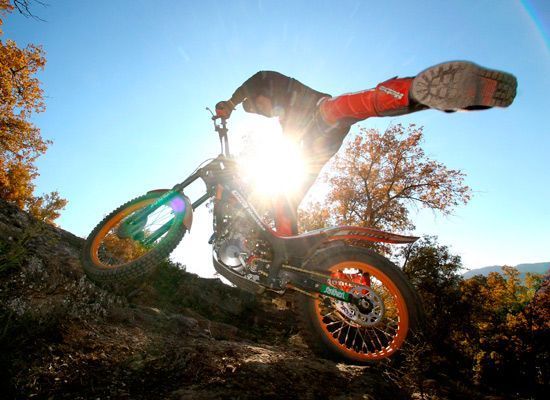
Another very delicate component, the clutch, turns out to be virtually identical to the standard one; There are only small changes in the clutch discs in order to achieve a higher preload, something that translates into faster sensations.
OFFICIAL SHOWA
The excellent cycle with which the standard 4RT starts has made things much easier in this area. The frame remains unchanged in terms of steering tube geometries and engine height; we only find a pair of seatposts made of magnesium prepared to receive the Renthal Fat-Bar handlebar without a central reinforcement bar.
The bulk of the changes in this section can be found in the suspension scheme: Bou’s 4RT has Showa “pata negra” material on both trains. At the front we find a machined fork with a special treatment that gives it that golden color and a different interior design that allows greater adjustment possibilities. Behind us we find a monoshock also signed by Showa , lighter than the standard one, with the peculiarity of having a separate gas tank instead of equipping it inside the body itself.
ACTION!
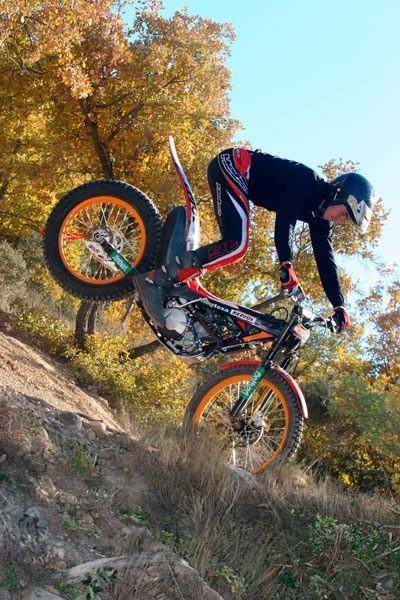
11:10. At that time it was our turn to get on Toni Bou’s official bike for a strict fifteen minutes; Later, around 1 p.m. we would have a second contact of another fifteen to contrast sensations with the reserve bike.
The first thing that gives away Toni’s bike is a light switch next to the throttle grip that allows you to select one of the three predefined curves. The faster and more direct Nissin master cylinder is another clear differentiator. We had the pleasure of lowering the bike ourselves from the stand that supported it and, remembering the fresh sensations we had of the production model, we did not take long to make a first objective assessment: it is very light!!
The technical team did not want to reveal the official weight figure, they only declared a weight of less than 70 kilos. Not content with such an unrepresentative figure, we made our own calculations: if the weight of the first evolution was already considerably lower than this figure, the profound changes made this year to achieve a more compact engine and the use of materials as light as titanium or carbon fiber had intensified. We are probably talking about a final weight of around 65 kilos. A truly incredible figure when you consider that the street version in running order stopped our scales at 77.4 kilos.
After thinking all of this through in a matter of seconds, we deployed the starter lever to get the valves of this official engine to start working. As it should be done in the production model, it is enough to accompany the lever from above gently to start the bike without problems; Despite the greater compression implied by this increase of close to 50 cc of displacement, the effectiveness of the system is outstanding. Before slowing down to normal speed, you can see how the engine revs slightly for an interval of approximately two seconds. Now we’re ready to engage some gear and head to the zones!
Before reaching the two routes proposed by the organization, we crossed a liaison of about five hundred meters by road, enough space to be able to stretch the four speeds of the engine well and get a first idea of its capabilities. The result translated into sensations is, quite simply, incredible: The final stretch knows no word “limit” and the very light front end needs mastery of the handlebars to know how to temper its slights and hold it well to the ground. We can already see the areas: in the first one, in the middle of the hillside, it is ideal to check the possibilities of this official mechanic, while the second, made of stone and more technical, will allow us to objectively assess the cycle part.
The The thrust of the engine is, quite simply, beastly. The most surprising thing is that it does not lose the feel of the standard engine, although there are great nuances compared to it: when cutting off the throttle the engine does not show as much retention or the bike digs in, but enjoys an inertia very similar to a 2T. The three maps are very different from each other and it is easy to see how they affect the behavior of the whole, however for an average user it is almost impossible to take advantage of such wide possibilities.
As we pointed out before, there is a configuration for rain, whose response at low and medium speed is less aggressive, another for dry where docility and power are perfectly combined, and finally a very aggressive one that allows you to squeeze all its juice to the maximum. All this effort would be useless if it is not transmitted in an effective way to the wheel; For that reason we find a very pre-loaded clutch, although in any case less than the bikes of Lampkin or Fujinami, and sensitive in the first third of its travel to be able to quickly fire the bike in front of the obstacle.
LIMITLESS STABILITY
If the feel of this engine is surprising, the behavior of the entire chassis is even more surprising. Although the Montesa technicians assured us that the most profound changes are found in a rear shock absorber prepared to withstand the very strong impacts that these bikes suffer in each training and race, the truth is that the overall behavior is radically different from the standard model.
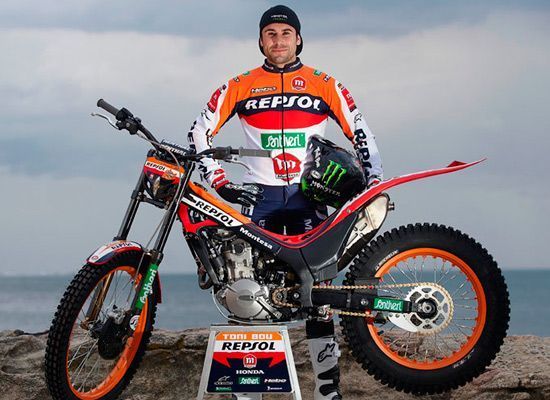
The fork is very light, very fast and sweet in the first half of the travel, from this point on it enjoys a progressive hardening that makes it maintain the type impeccably in the moments of maximum effort. On a user level, we noticed that the bike is very complicated to control in turns, and this is something that Bou already predicted to us, since controlling so much power and lightness in the same set requires more time to adapt.
At the rear, the same tone is maintained: smoothness and speed in the first two-thirds of the travel to accentuate the feeling of lightness and facilitate changes of direction, and A beastly ability to absorb large impacts without compromising the stability of the whole at any time. It doesn’t matter where you jump from or how hard the receiving terrain is, digging in its aggressive brakes this Cota 4RT stops without showing the slightest twist or false movement, and it’s no wonder, We’re talking about the ultimate evolution of a suspension set which, as standard, are recognized as the best in the world.
In short, it is a motorcycle that has behind it an almost incalculable investment in R+D, very light parts of a very high cost and electronics that we could well associate with the means available to a Moto GP or Formula 1 team. After riding half an hour with the best bike in the world our conclusion is clear, the specialty of trial is still the exception that proves the rule: a rider like Bou, who usually rides areas that are really inconceivable for an average user, needs a medium of these characteristics to fight with guarantees to be the best in the world. But an earthly amateur, like you or me, wouldn’t experience a drastic improvement in the zones compared to the stock bike. Although if we could choose, we would share the opinion of another of the guests at the event, who as soon as he got off the bike nodded in a serious tone: “Come on, okay, I’ll take it”.
Text: David Quer / Photos: JCO&Honda / Via Motociclismo
HIGHLIGHTS: UNBEATABLE ENGINE AND SUSPENSION
THE LEAST: DIFFICULT CONTROL OF THE FRONT END
MAIN DIFFERENCES MONTESA COTA 4RT OFFICIAL – SERIES
Engine
* Displacement around 300 cc.
* Narrower engine with magnesium crankcases.
* Four-speed gearbox.
* Replacement of numerous steel and aluminum internal components with titanium.
* Elongated starter lever.
* Clutch similar to the standard but lightened, with more pre-loaded springs.
* Exhaust manifold made of titanium, thicker to adapt it to the requirements of the new displacement.
* Also thicker and made of titanium, complemented by a protector made of texalium.
* Standard Keihin injection with programmable ECU.
* Switch on handlebars to choose between the three proposed maps.
* Telemetry system.
* More complex electronics.
* Radiator with larger capacity.
Cycle part
* Official Showa fork with machined aluminum bottles and more adjustment possibilities.
* Showa-specific rear suspension with pump independent of the main body, adjustable in both compression and rebound.
* Nissin front master cylinder.
* Special brake pads.
* Clutch pump with increased capacity.
* Rear brake disc with windows.
* Flat fuel tank with 1.3 litre capacity.
* Support of stirrups made of titanium.
* Titanium footpegs.
* Different skid plate.
* Iris Chain.
* 39-tooth crown.
* Complete titanium tortilleria.
* Magnesium fork posts.
* Renthal handlebar “FatBar” model.
* Carbon fiber protectors on: exhaust manifold, silencer, clutch cover and fork bridge.
* Titanium swingarm axles and wheels.
* Lightened DID rims as standard.
* Special rear wheel tensioners.
* Specific decoration of the Montesa-Repsol team.
* Fuel tank: 1.3 l.
* Declared weight: 70 Kg.
